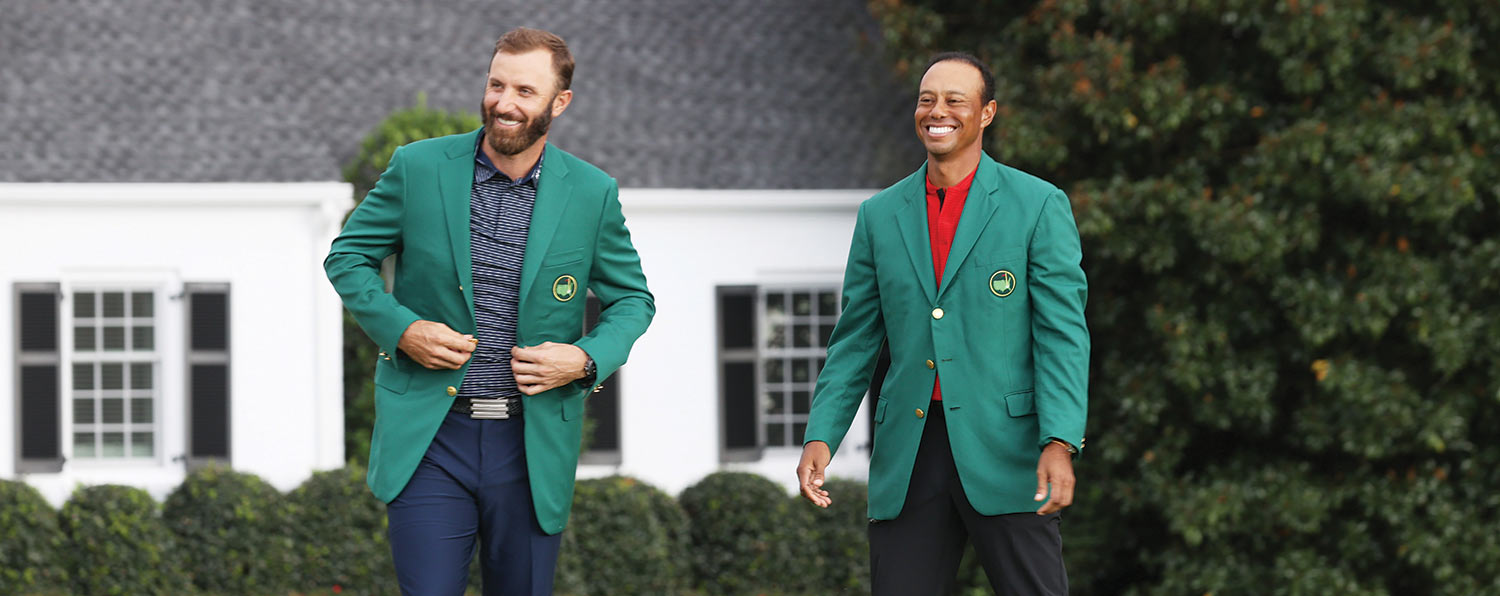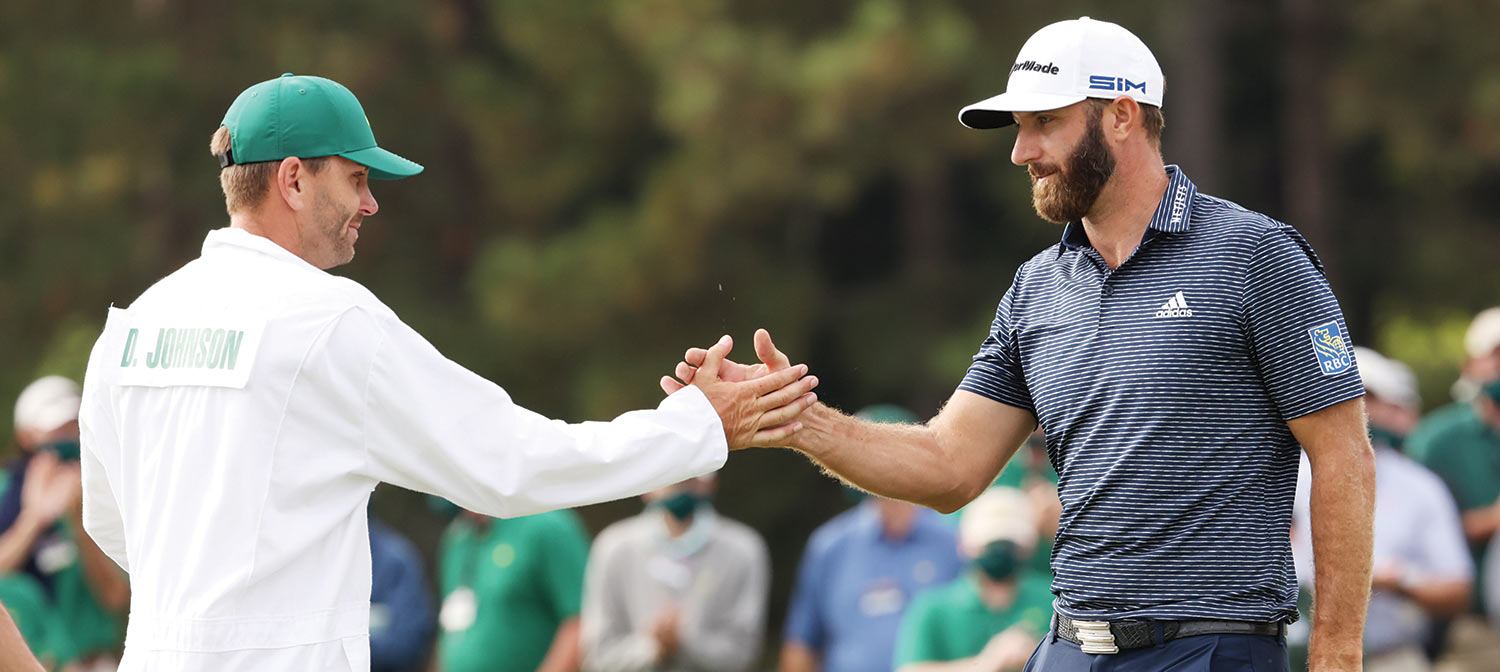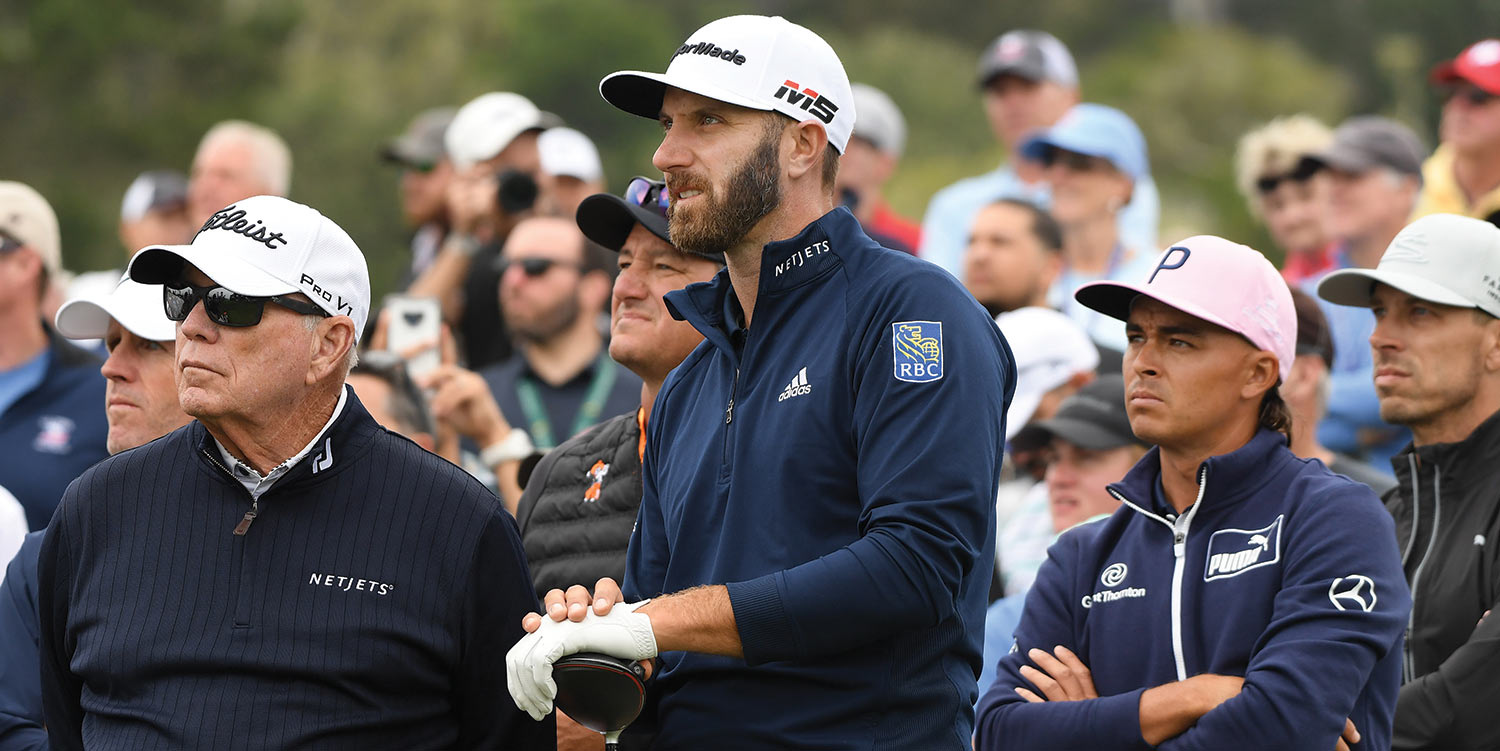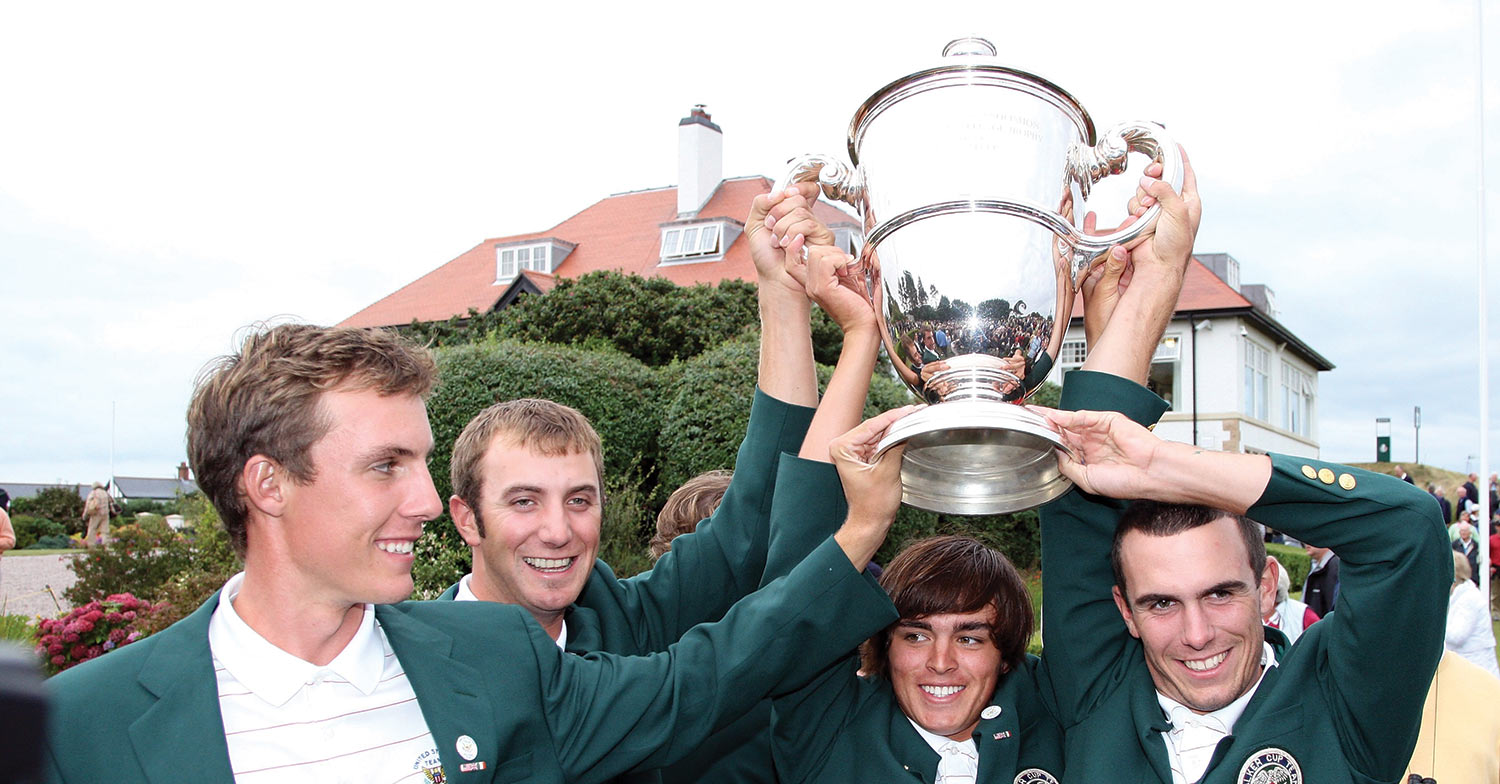
uccess has not come easily to Dustin Johnson. He has taken some of the mightiest blows majors golf can muster, yet every time Johnson is knocked off his feet he climbs back up, ready for more. The 2020 Masters Champion spoke exclusively to Robin Barwick
Down at the Weed Hill driving range in Columbia, South Carolina, pros Kevin Britt and Jimmy Koosa would keep an eye on the prodigy Dustin Johnson, who worked through bucket after bucket of golf balls, day and night. Ben Hogan said, “the secret is in the dirt,” and Johnson’s patch of dirt was at Weed Hill. As the name suggests, it was a no-nonsense kind of place, and that suited Johnson just fine.
If you are interested in trying to drive the golf ball like Johnson with an average of 317 yards—there is an unconventional drill that may or may not help.

“I did this driver drill,” starts Johnson, 36, the reigning 2020 champion. “I have never seen anyone else do it: I would hit 100 drives really fast, like in the space of 10 minutes. A lot of golf balls went flying. I had to have someone to tee up the balls for me so all I would do is swing again and again, really fast, and the idea was to help increase my swing speed. You get worn out doing that drill in no time at all, say after 30 balls, and then you have to use all your body strength to get through to 100. It was hard.”
Just the thought of it is exhausting.
Into his teenage years, Johnson was often the last man standing on the long row of artificial mats at Weed Hill.
“That was where I put in the long hours and where I would shut the lights off every night,” he says. “I would just hit balls until they closed each night at 10pm and one of the guys in the shop would give me a lift home.”
Johnson played a lot of baseball and soccer too, and he and brother Austin would often head up the street to the court by the church to play basketball. The boys’ grandfather, Art Whisnant, starred on court at South Carolina and almost made it to the NBA, while Austin—who caddies for his older brother on tour—played guard at Charleston Southern University. By the seventh grade, the elder Johnson brother let the other sports fall by the wayside as his efforts on the golf course flourished.

Columbia is 70 miles from Augusta, Georgia, and that is where a teenage Johnson went with his dad Scott one year, so he could see up close his heroes Davis Love III, Fred Couples and the “Shark”, Greg Norman.
“I don’t remember the year, but that was the only Tour event I went to growing up,” says Johnson. “We were there for a practice round. There were so many people there, and what hits you the first time you walk into Augusta National is just how green everything is there, and it is only when you are actually there in person that you can appreciate how steep some of the slopes are. You can’t see the slopes when you watch the Masters on TV. The hill down from the 10th tee—it’s really steep—and coming back up 18. That 10th hole is great, but then every hole is great at Augusta.
“As a kid playing golf the dream was always to play there one day. Whether it was on the putting green or in a chipping contest, or a putt on the 18th hole, we always imagined it was to win the Masters at Augusta.”
It’s funny how things can turn out. Playing in his 10th Masters last November, Johnson reigned supreme. He held at least a share of the lead after each of the four rounds and eventually strolled to a commanding five-shot victory—Johnson’s second major title after the 2016 U.S. Open at Oakmont—and his final score of 268 was the first-ever Masters score below 270.
“It is pretty cool to actually have that dream come true,” adds Johnson in typical understatement.

Butch Harmon started coaching Johnson more than a decade ago, before eventually handing over responsibility to his son Claude III, who maintains a regular presence on PGA Tour driving ranges.
“In all honesty, when Dustin’s game is on, if everyone else’s game is also on, Dustin wins,” starts Harmon, speaking from his famous Butch Harmon School of Golf at Rio Secco GC, Nevada. “That’s not a put down to Rory [McIlroy] or any of the other players, it is just that when Dustin is on, his talent level is so great that he is the closest thing we have seen to Tiger Woods. The difference is that Tiger Woods was that good for 20 years.
In all honesty, when Dustin’s game is on, if everyone else’s game is also on, Dustin wins
“Dustin has matured, he has become an incredibly smart golfer, and what is amazing is that when bad things have happened to Dustin in big tournaments it is like water off a duck’s back. He just carries on.”
Johnson is a spectacular driver of a golf ball, yet the greatest strength to his game might be that ability to shrug off disappointments that would crush others.
Johnson’s list of major near misses is extensive. It started at the 2010 U.S. Open at Pebble Beach, when he took a three-shot lead into the final round before posting a triple bogey at the second hole and a double at the third on his way to a closing 82 and a share of eighth place. Johnson would later admit that he let the occasion quicken his rhythm and his decision-making.
Pebble Beach was a brutal yet significant lesson for the emerging Johnson, aged 25 at the time, and it made him stronger. Just two months later in the PGA Championship at Whistling Straits Johnson was back into a winning position until he grounded his club on sandy ground that was classified as a bunker on the 72nd hole. It cost him a two-shot penalty and a place in the play-off. Golf was again inflicting mental and emotional torture on him, in clear view to millions of astonished eyes.
The following July, in 2011, Johnson was back, this time in the final pair at The Open with Darren Clarke at Royal St. George’s. Two shots behind Clarke’s lead at the par-five 14th hole, Johnson was hoping for an eagle chance but instead shanked his two-iron second shot out of bounds. Then there was the 2015 U.S. Open at Chambers Bay, when Johnson had a 12-foot eagle putt on the final hole for the title. He missed it, and the one coming back, thereby presenting a shocked Jordan Spieth with the trophy.
As for the Masters, Johnson was in the form of his life going into the 2017 tournament, until he slipped on the stairs of his rental home and injured his back, forcing a heart-breaking withdrawal on the morning of the first round.
And even when Johnson did finally claim his first major title at the 2016 U.S. Open at Oakmont, there was confusion over whether he had accidentally caused his ball to move on a green. The USGA eventually enforced a one-stroke penalty but by then Johnson had seen enough final-round calamity he calmly won anyway.
There is nothing you can throw at Johnson that will break his long stride. Sometimes others can beat him, but they can’t break him.
“That situation at Chambers Bay would have ruined lots of players,” says Harmon. “It literally would have ruined their careers. But D.J. just goes forward. He just puts it behind him and says, ‘I’ve got to play this next shot. It is all I have control over’.”

Outwardly at least, nothing seems to phase Johnson, so it is reassuring to learn that he has felt nerves once or twice. He is human after all. One such occasion, he says, was when he made his Ryder Cup debut at Celtic Manor in Wales in 2010, opening the first fourball match with Phil Mickelson—but the first real moment of nerves came three years earlier, also standing on British ground, in the 2007 Walker Cup in Northern Ireland.
“I will never forget the first tee at the 2007 Walker Cup at Royal County Down,” shares Johnson. “Colt Knost and I were playing Rory McIlroy and Jonathan Caldwell and that was, for sure, the most nervous I have ever been. There were a lot of people crowding around the tee and up the fairway and I had never really played in front of that many people. There were pretty big crowds, particularly as it was the opening session and we were against Rory, the local guy. It was foursomes and I took that first tee shot. I hit it good but I am pretty sure the ball was in the air before the announcer got through saying my name.”

The American pairing grinded out an excellent half in that match, on the way to a close-fought American victory on an 18-year-old McIlroy’s home turf.
Johnson has absorbed blows that would knock most competitors flying over the ropes and into the front row. He has fallen, but “D.J.” never fails to rise back to his feet, ready for more. Yet unlike the weary boxer, after each punishing round, Johnson just gets stronger.
Follow Us On


| Cookie | Duration | Description |
|---|---|---|
| cookielawinfo-checkbox-analytics | 11 months | This cookie is set by GDPR Cookie Consent plugin. The cookie is used to store the user consent for the cookies in the category "Analytics". |
| cookielawinfo-checkbox-functional | 11 months | The cookie is set by GDPR cookie consent to record the user consent for the cookies in the category "Functional". |
| cookielawinfo-checkbox-necessary | 11 months | This cookie is set by GDPR Cookie Consent plugin. The cookies is used to store the user consent for the cookies in the category "Necessary". |
| cookielawinfo-checkbox-others | 11 months | This cookie is set by GDPR Cookie Consent plugin. The cookie is used to store the user consent for the cookies in the category "Other. |
| cookielawinfo-checkbox-performance | 11 months | This cookie is set by GDPR Cookie Consent plugin. The cookie is used to store the user consent for the cookies in the category "Performance". |
| viewed_cookie_policy | 11 months | The cookie is set by the GDPR Cookie Consent plugin and is used to store whether or not user has consented to the use of cookies. It does not store any personal data. |